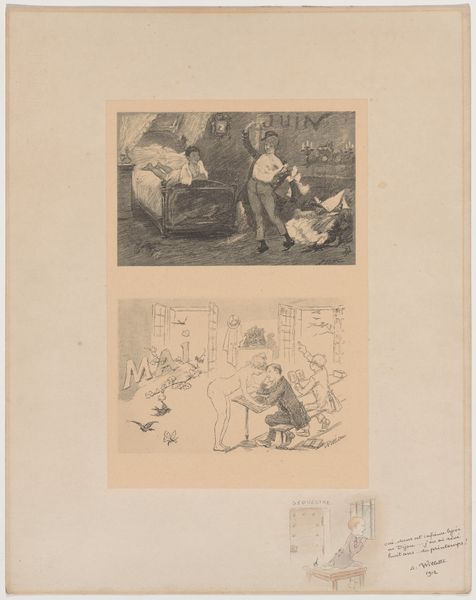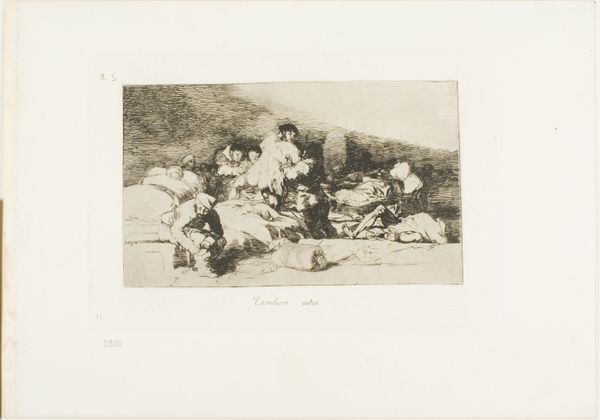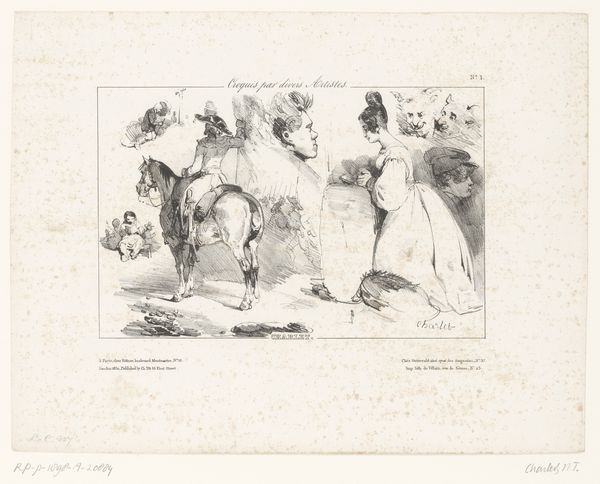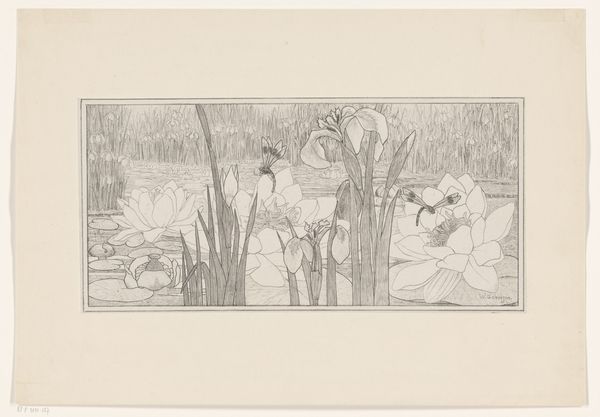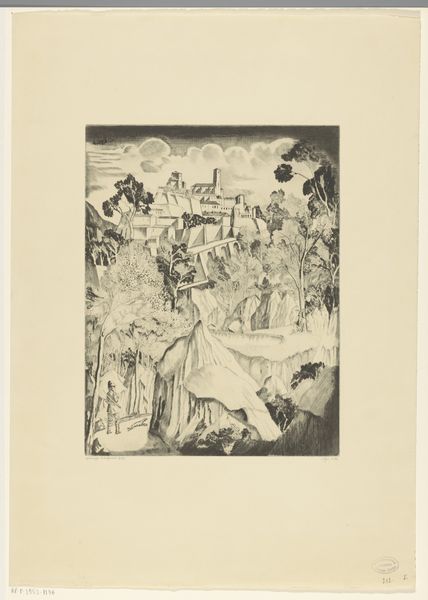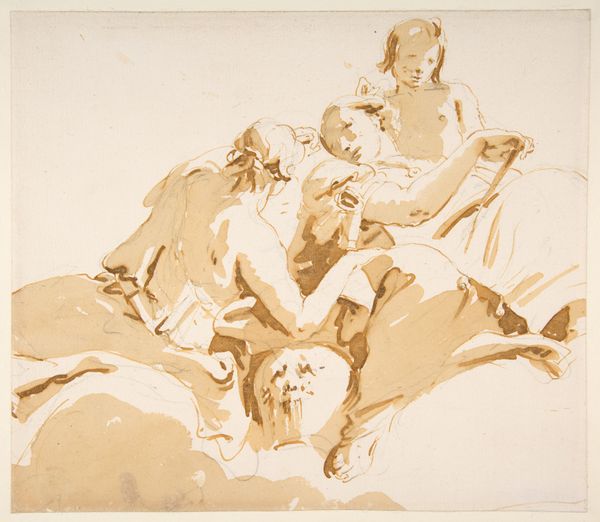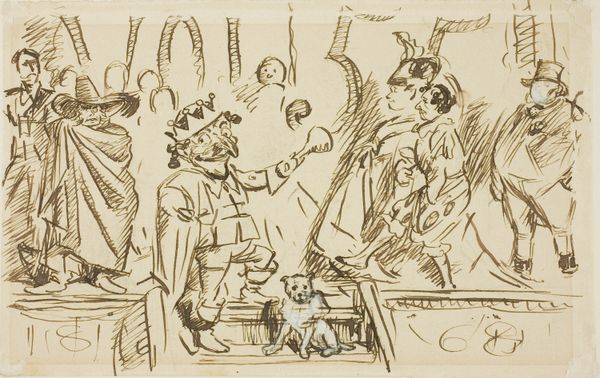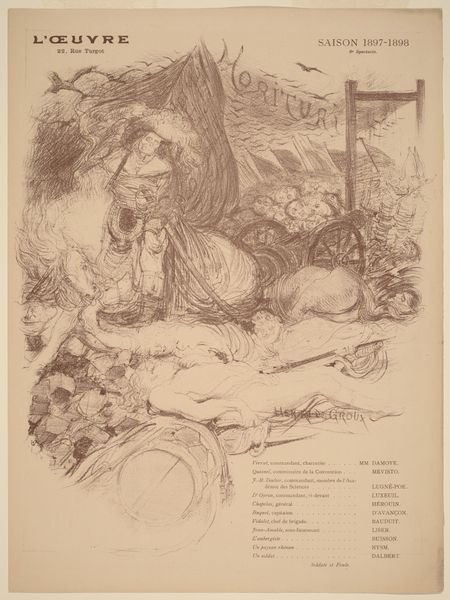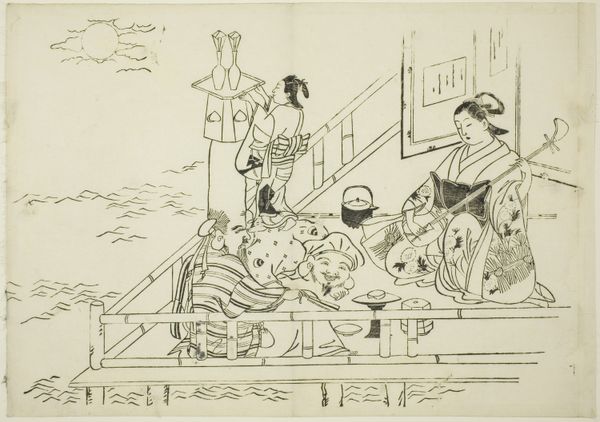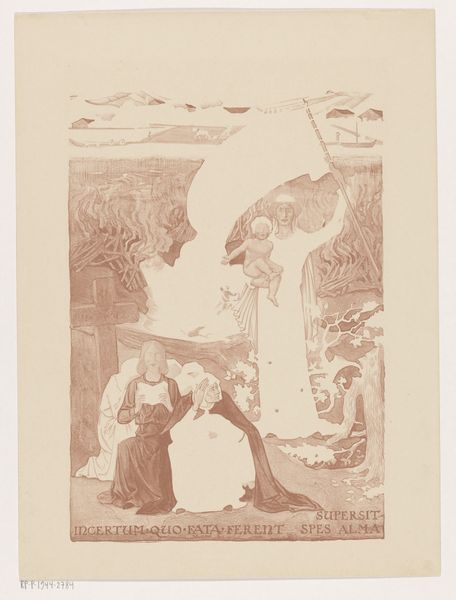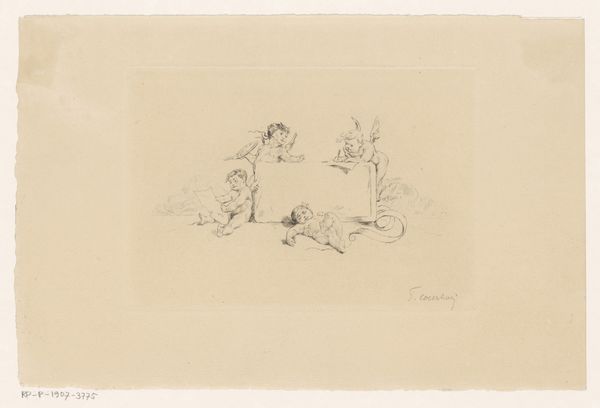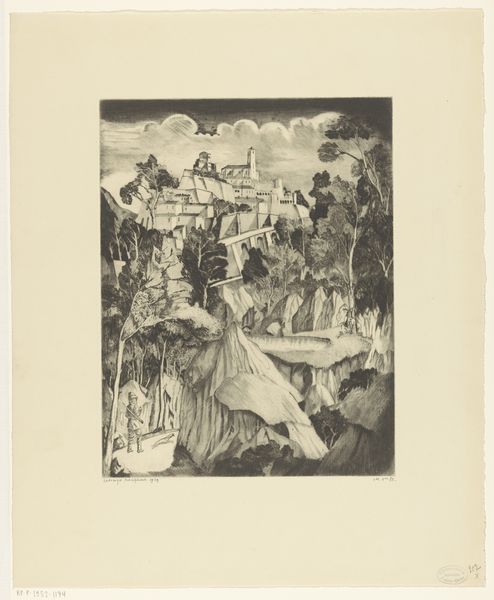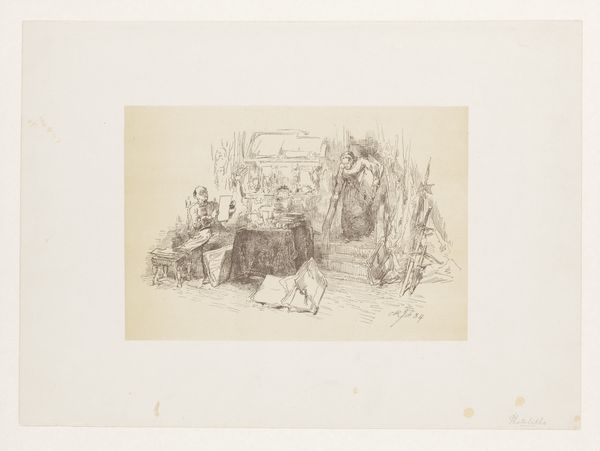
Dimensions: 262 × 424 mm (image/plate); 364 × 536 mm (sheet)
Copyright: Public Domain
Curator: Lepère’s “Modern Bucolic,” etched in 1901, captures a leisurely scene, reminding us of a less frenetic era. Editor: It evokes such a dreamlike state! The soft, warm tones bathe the entire scene in a comforting glow, a lazy afternoon haze of chatter and warmth. Curator: As a printmaker, Lepère was incredibly skilled at exploiting the possibilities within etching. The ink application, paper choice, and the very act of repetitive reproduction—they all inform our understanding. Did he mean to idealize these scenes of labor, or draw attention to emerging technologies of reproduction? Editor: Perhaps both? I see the beauty in that paradox. The way he layers the figures gives the sense of being amongst them, part of the gathering – an almost tactile quality. And the lone ball in the lower right looks strangely poignant. Curator: Consider too, the rapid changes sweeping Parisian society at this time. Mass production meant leisure became a more visible performance of social class, think about advertising or fashion, and how this print engages with notions of escapism, and constructed identities, Editor: I find it amazing how he has used the simplest line work to communicate mood and story – creating the feeling of shared moments and experiences within a specific snapshot of Parisian life, evoking intimacy on the most minimal and unassuming level. Curator: His choice of printing—etching and ink—and even the multiple states he created for many of his images speak to the accessibility and appeal of print culture as a form of mass communication, as a space of exchange, a method that enabled ideas to move easily from the fringes of the city, Editor: Yes! Which in the process becomes intimate – each small variation becoming unique. The skill he applies within the etching marks gives me joy – capturing a modern pastoral scene which at once reflects back at itself, Curator: Lepère seems keenly aware of his historical position—not just within artmaking, but within the rapid cultural shifts transforming life in Belle Époque France. It allows a richer appreciation of the material forces shaping leisure itself, doesn't it? Editor: Absolutely. What starts out feeling nostalgic blooms into an inquiry. I'm grateful that a single artwork contains this.
Comments
No comments
Be the first to comment and join the conversation on the ultimate creative platform.

